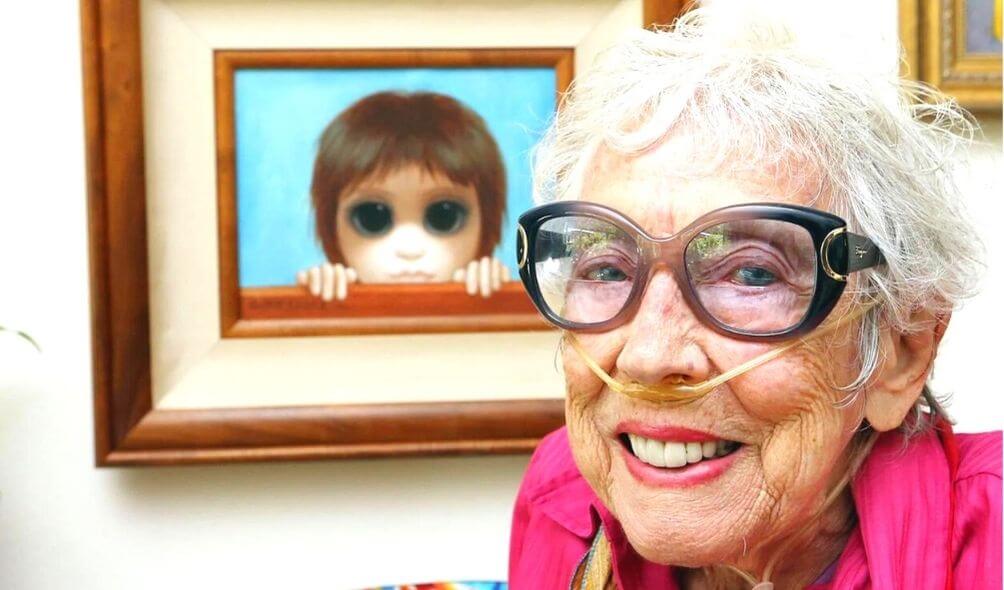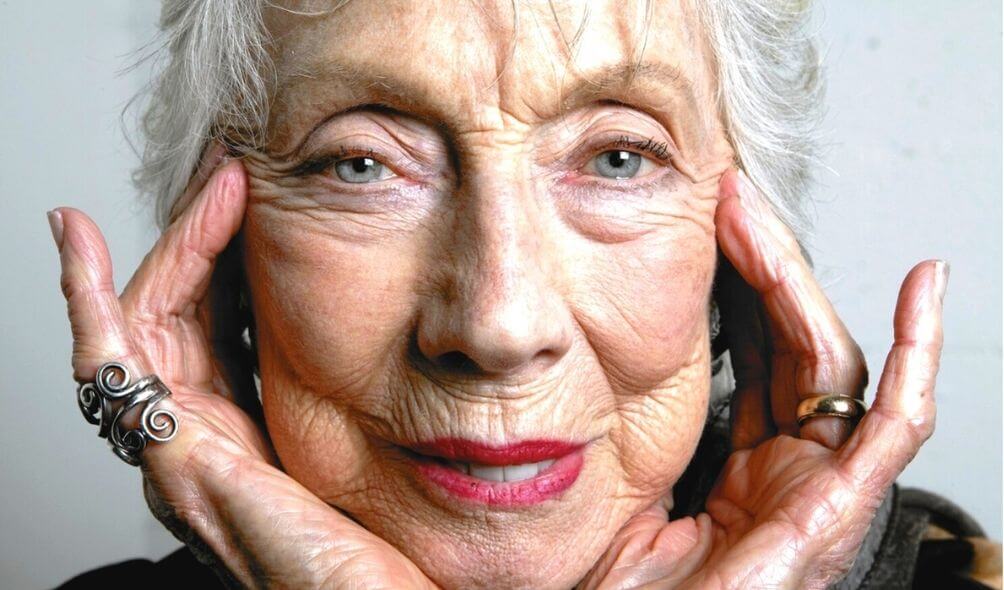For a brief period in the 1960s, Margaret Keane’s paintings of despondent creatures with saucer-eyed expressions—crying waifs, grownups with haunting expressions, and melancholy animals and dogs—seemed to be everywhere.
Her images were transformed into posters, plates, figurines, and postcards that were sold at Woolworths while the originals were displayed at the United Nations and the New York World’s Fair. Her images are easily recognizable thanks to their large expressive eyes.
Margaret Keane Death, Heart Condition To Blame
Even though celebrities like Kim Novak, Natalie Wood, Liberace, and Jerry Lewis bought her artwork, Ms. Keane’s talent was mostly unknown to everyone outside of her husband, Walter Keane. He was a former real estate agent with a knack for marketing; he was more of a fraudster than a genuine artist who took fake credit for her work.

Ms. Keane also reflected once by saying, “The whole thing simply snowballed, and then it was too late to claim it wasn’t him who painted them.
I’ll always be sorry that I didn’t have the courage to defend my rights.”
After years of remaining silent, Ms. Keane finally spoke out, divorcing her husband and informing journalists that she was the one who created all those works of art bearing the “KEANE” signature.
Later, after fighting her ex-husband for libel, she was vindicated in a courtroom paint-off when she created one of her famous sad-eyed waif paintings for the jury, finishing the painting in under an hour.
Due to a shoulder ailment, her ex-husband refused to paint.
Ms. Keane passed away on June 26 at the age of 94 in her Napa, California, home, where she had carried on creating art up until that point. Jane Swigert, her daughter, claimed that a heart condition was to blame.

Even though Ms. Keane’s pieces commanded high prices on the art market, they divided viewers because many thought they were too vivid and ominous to place on a wall.
In 2018, she also said, “I think a lot of people were terrified to look at them and still are.” They claim to adore them, but they are unable to coexist with them.
Art critics took great pleasure in disparaging her art, describing it as often tacky and overly emotional. In a 1964 review of one of her more ambitious works, “Tomorrow Forever,” which featured a long line of wide-eyed kids, John Canaday referred to her artwork as “the very essence of tasteless hack work.”
However, Ms. Keane had a large and vocal following. Lawrence Alloway, an art critic, and curator said that Ms. Keane’s artwork was “in poor taste” and that it was “very obscene, bizarre, but it’s still wonderful.”
Andy Warhol disagreed, saying that “if it were awful, so many people wouldn’t appreciate it.” Joan Crawford, another enthusiast, said she wanted to decorate her house with Keane artwork: “I had a fountain designed expressly to go with one.”
In addition to influencing pop surrealists like Mab Graves and Mark Ryden, Ms. Keane’s work is credited with giving “The Powerpuff Girls,” an animated Cartoon Network cartoon with a character named after her, big-eyed appearance.
In his 2014 film “Big Eyes,” directed by Tim Burton, who had a collection of her paintings, Ms. Keane was portrayed by Amy Adams, while Christoph Waltz played her husband.
Read More:

